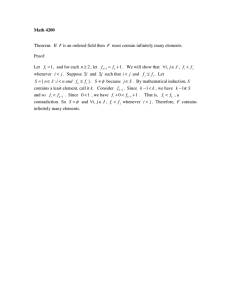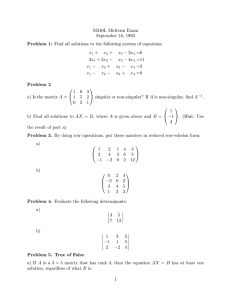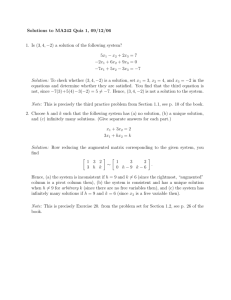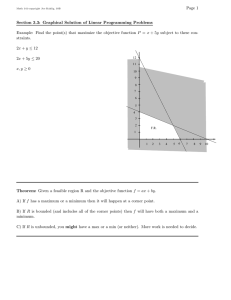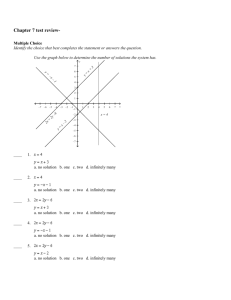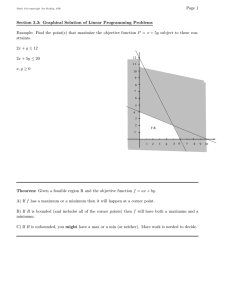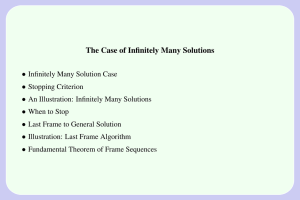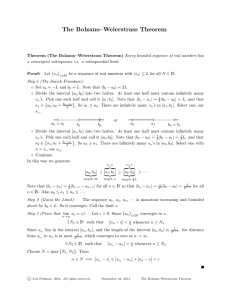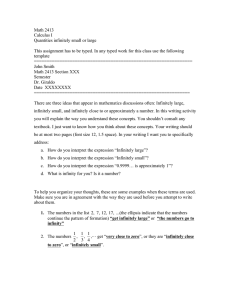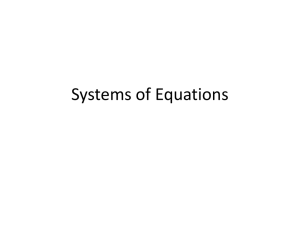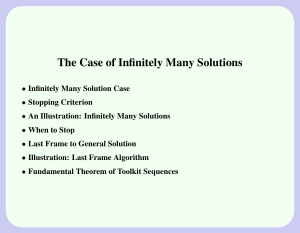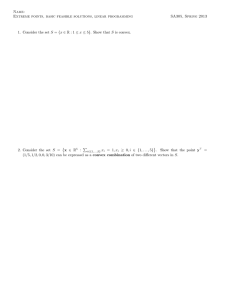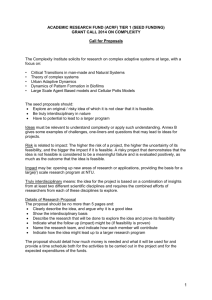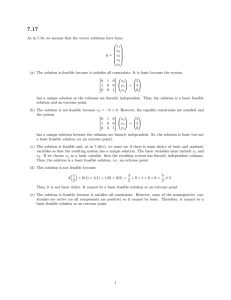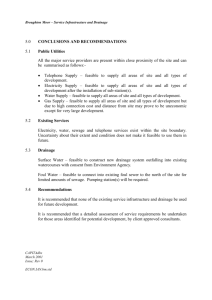CHAPTER 4
advertisement
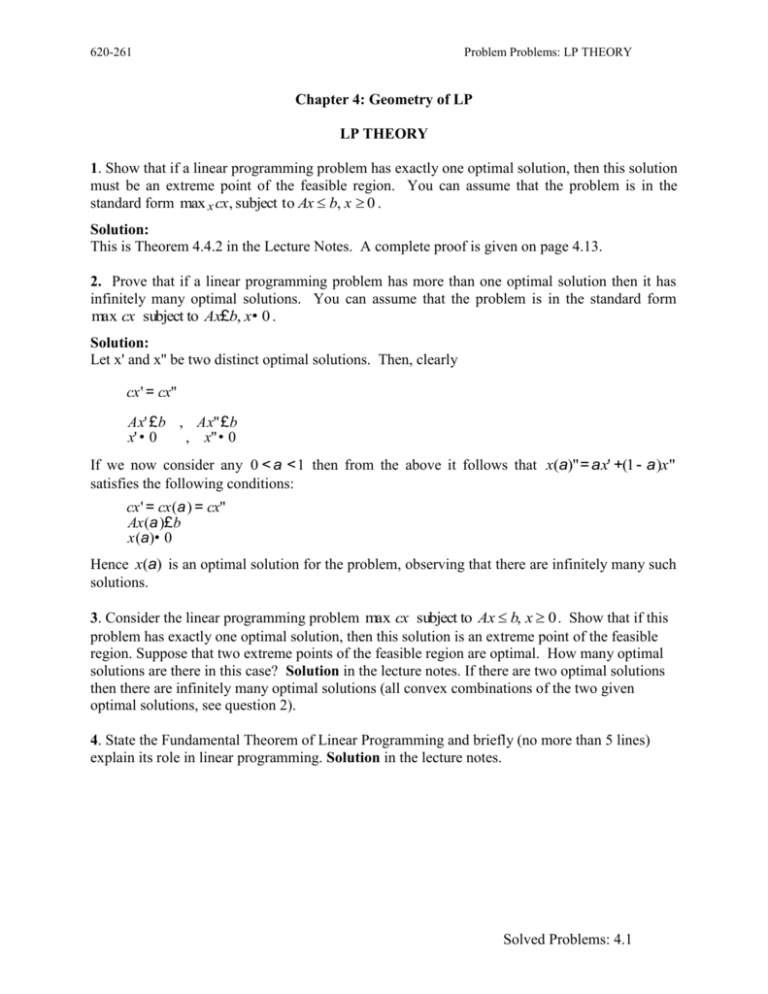
620-261 Problem Problems: LP THEORY Chapter 4: Geometry of LP LP THEORY 1. Show that if a linear programming problem has exactly one optimal solution, then this solution must be an extreme point of the feasible region. You can assume that the problem is in the standard form max x cx, subject to Ax b, x 0 . Solution: This is Theorem 4.4.2 in the Lecture Notes. A complete proof is given on page 4.13. 2. Prove that if a linear programming problem has more than one optimal solution then it has infinitely many optimal solutions. You can assume that the problem is in the standard form max cx subject to Ax£b, x•0 . Solution: Let x' and x'' be two distinct optimal solutions. Then, clearly cx' = cx" Ax' £b , Ax"£b , x"•0 x' •0 If we now consider any 0 < a <1 then from the above it follows that x(a)"= ax' +(1 - a)x" satisfies the following conditions: cx' = cx(a) = cx" Ax(a)£b x(a)•0 Hence x(a) is an optimal solution for the problem, observing that there are infinitely many such solutions. 3. Consider the linear programming problem max cx subject to Ax b, x 0 . Show that if this problem has exactly one optimal solution, then this solution is an extreme point of the feasible region. Suppose that two extreme points of the feasible region are optimal. How many optimal solutions are there in this case? Solution in the lecture notes. If there are two optimal solutions then there are infinitely many optimal solutions (all convex combinations of the two given optimal solutions, see question 2). 4. State the Fundamental Theorem of Linear Programming and briefly (no more than 5 lines) explain its role in linear programming. Solution in the lecture notes. Solved Problems: 4.1
